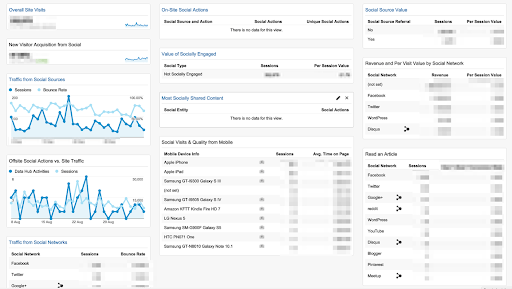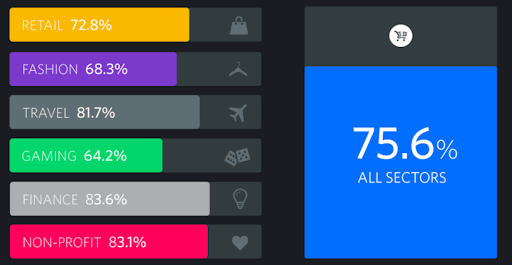7 Strategies to Increase Marketing ROI for eCommerce in 2021
In digital marketing, the strategies that were successful a few months ago might no longer be bringing results. As a marketing strategist, it’s important to adjust fast, stay up-to-date with trends, and come up with innovative ideas that haven’t already been used many times by other marketers. Here we talk about ways to increase marketing ROI for eCommerce.
Strategies to Increase ROI in 2021
What are the winning eCommerce marketing strategies to help you achieve a higher ROI with your marketing campaigns in 2021?
Taking a more data-driven approach to marketing campaigns and getting more personalized with content is a good overarching strategy for 2021. Campaigns with data-driven personalization achieve five to eight times the ROI on marketing spend.
Let’s review the seven strategies that you can use in your marketing plan for 2021 to help increase your ROI.
1. Apply deeper content personalization
A report by Accenture revealed that 91 percent of customers are eager to buy from the companies that provide relevant offers. Content personalization has a direct impact on consumer buying decisions, and it shouldn’t be neglected in your eCommerce business.
Online shoppers differ in their preferences and interests. This can become a challenge with content personalization, as brands have to create relevant experiences for multiple customer segments. So what does this look like in practice and how do you make it scalable?
The first step is collecting information on user behavior. ECommerce brands should be tracking the pages users visit, what products interest them and how often they buy something or convert with the store.
These are just some examples of what to measure. You can collect and analyze information in many ways when you start creating personalized eCommerce page content.
You can even integrate online polls and questionnaires to ask store visitors additional questions and learn about their preferences, just like this example below:

Source: Warby Parker
Once you have a plan for data collection, it’s time to decide on the elements you want to customize to provide a unique user experience for different customer profiles.
Consider personalizing the main page, product pages, or even the checkout process. Dynamic content, headlines, product descriptions, images, content widgets, and more can all be customized. This is done to create a unique experience based on the users’ previous interactions with an online store.
2. Segment your lists better
The next way to show your customers relevant offers is through list segmentation. One channel where this is crucial is email and, more specifically, newsletters. Let’s focus on the way brands can segment email lists to provide users with unique experiences.
There are many different criteria with which to personalize online content with email and marketing automation. Here are just some of them:
- Demographics (age, employment, salary, etc.)
- Interests and preferences
- Location
- Browsing history
- Purchase history
- Purchase amount
- Inactivity duration
For example, Amazon asks clients to rank how well the purchased product fit them. Not only is this a great way to collect customer feedback and get clients to rank products, but it also helps engage customers via email so they feel cared about.

3. Become more data-driven
You can’t improve what you can’t measure. That is why you have to rely on data when creating a marketing strategy for eCommerce.
Custom reports and dashboards are the tools you can use to analyze campaign performance and identify potential bottlenecks.
With a custom dashboard, you can quickly check if you are on track with your marketing goals and KPI metrics. You can also analyze how a new strategy for content personalization performs and if it translates into higher sales volume.

Source: Social Media Dashboard Import, by Justin Cutroni
While custom dashboards help you understand where you are with data, they won’t tell you why certain strategies underperform. For this, eCommerce brands can use Google Analytics custom reports to dive deeper into traffic sources, device categories, operating systems, and goal completions.
Remember data should be at the forefront of your marketing decisions if you plan to achieve the next growth milestone for your eCommerce business.
4. Do more A/B tests
You can’t know customers’ preferences better than they do themselves.
You might come up with some assumptions about how they interact with your online store and what page structure and elements will best serve their needs.
However, when something doesn’t work, you might start questioning those assumptions when you conduct some usability tests and discover your customers think your store is not user-friendly and trustworthy.
Brands can avoid this mistake by testing out different approaches. Run A/B tests, validate what page version or page element performs better and, as a result, drive higher conversion rates.

Source: Orderhive
A/B tests allow you to understand how small changes in product page structure and its elements can affect a buyer’s behavior.
Here are a few page elements to consider testing for different options.
- Call to actions
- Page content
- Images
- Reviews
- Navigation
- Checkout process
Start researching how consumers interact with your store. Next, state a hypothesis about user behavior, determine variables, set parameters, and then launch your test.
5. Focus on lead nurturing
Cart abandonment and churn are some of the biggest challenges subscription businesses face these days. According to Statista, an average churn rate across industries amounts to over 75 percent.
Retail has quite a high churn rate (72.8 percent), along with finance and travel industries. So what can one do to decrease the churn rate?

Source: Salescycle
To avoid high churn, it’s important to nurture relations with the users who haven’t completed their last purchase yet.
Introduce dynamic retargeting and triggered emails aimed at bringing churned users back. You can offer time-sensitive discounts to incentivize first-time buyers, like in the example below.

Source: Thrive Market
6. Implement user-generated content
Product reviews, social media posts, and product photos shared by customers are some places where user-generated content (UGC) can be a powerful tool for breaking buying objections and building trust with potential customers.
Patagonia integrated UGC in its social media strategy on Twitter, encouraging customers to use the hashtag #VidaPatagonia where influencers and shoppers could share their climbing experiences.
This helped Patagonia show potential customers how its products can be used and how well they pass tests in the outdoor environment. This social media strategy also helped Patagonia build a closer connection with the customers who engaged with the campaign.
It is the season to #VidaPatagonia. See the gallery of our ambassadors and friends: https://t.co/4d84KOhn4N pic.twitter.com/ISnbOLVHl6
— Patagonia (@patagonia) January 30, 2016
Another retail brand, Topshop, used UGC during London Fashion Week to showcase live trends in connection to the products Topshop offered in its traditional and online stores.

Topshop gathered data from across multiple online channels to show fashion trends in real-time during one of the biggest fashion events in the UK.
While showing the trends in the form of Twitter hashtags, Topshop then displayed the products that corresponded to trending keywords. People could see the products next to the Twitter trend hashtags on billboards across the biggest UK cities.
Here, Topshop integrated the offline and online experiences—helping potential customers discovering their products and encouraging them to visit the stores.
7. Stick to a strategy, not tactics
Remember to rely less on gut-feeling and more on evidence and data. Even though nothing should block your creative ideas, you should integrate analytics into your daily routine and keep an eye on KPIs. That’s how you build a more effective marketing strategy in 2021.
Many small and trendy marketing ‘hacks’ may get you and your colleagues excited. However, if you are planning to achieve bigger marketing goals and make progress with your career, you should set short-term tactics aside and focus more on a well-thought-out strategy. So, what aspects of work should you reconsider to become a more effective marketing leader?
First of all, think about how you spend your time introducing new strategies. Analyze how much time is spent on the campaigns that bring good results and those that underperform.
Use time-management tools to find out where you should focus your time and reduce the activities which don’t translate into your business’s growth.
Also, remember the success behind delivering a strategy lies in your team. Consider reviewing how your team manages daily tasks and make a plan for more effective collaboration.
Summary
These seven strategies will have an impact on your marketing in the next year if you implement them and will help you grow your business.
Let’s sum up what your eCommerce brand should do to achieve a higher ROI in 2021:
- Deeper content personalization
- Advanced list segmentation
- More data-driven decisions
- A/B Tests
- Focus on lead nurturing
- Implement user-generated content
- Strategy over tactics
Don’t forget to integrate these strategies into your marketing plan for 2021 and regularly measure customer experience if you are aiming to be ahead of your competition!




